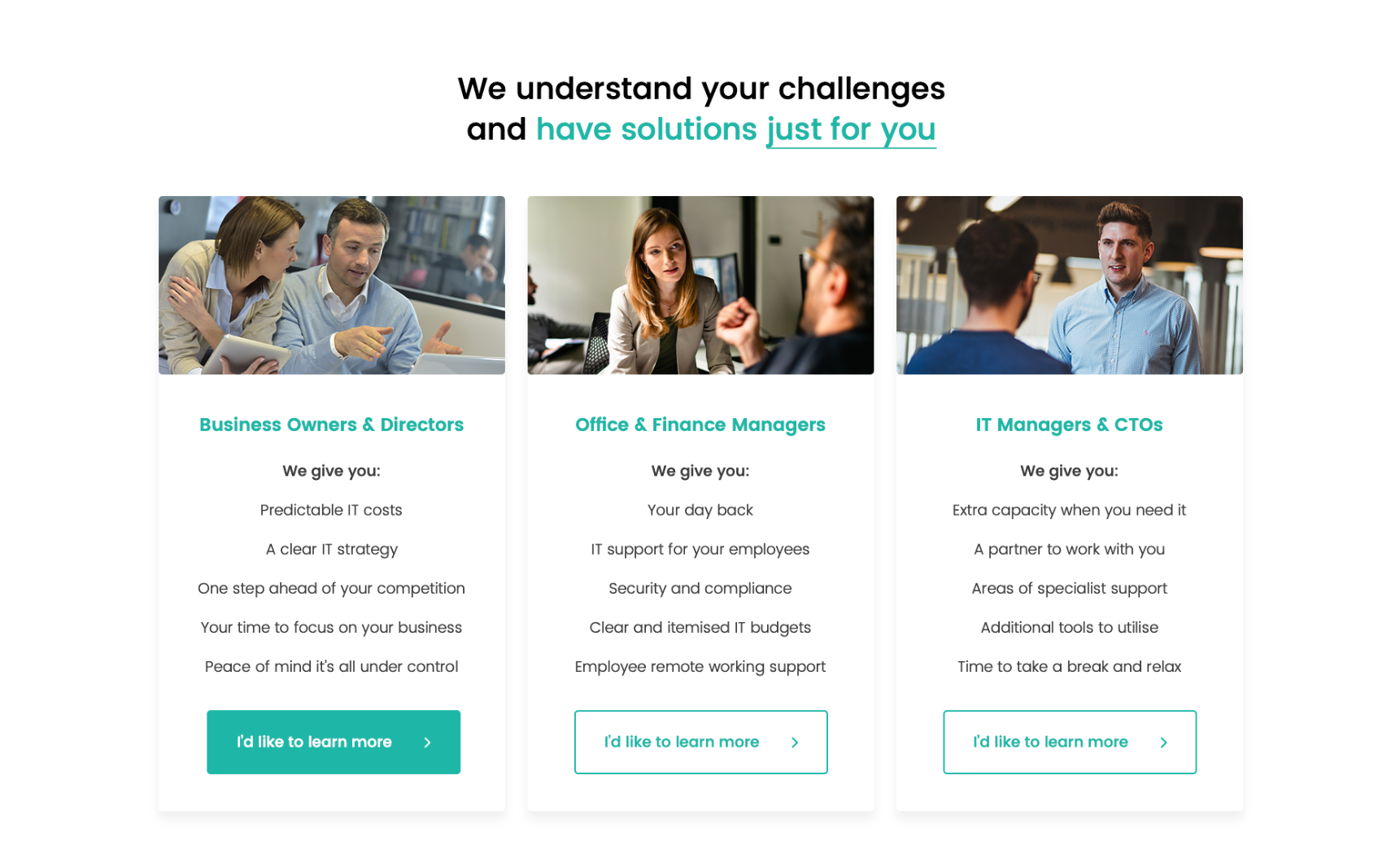Attempting to market your business to anyone and everyone is a huge no-no, however, it’s common for brands to have more than one target audience.
But, how do you successfully design a website that resonates with all of your customers, while avoiding confusion, mixed messaging and – ultimately – fewer conversions?
At Mattix, we’ve worked with a few clients who experience this dilemma.
Obviously, you want to ensure that your website’s user experience is as frictionless as possible, but at the same time, it’s tricky to cater to everyone’s needs.
It’s tempting for businesses to set up several different domains to suit each type of customer, but this is usually an unnecessary step.
With some careful consideration and clever design work, it is possible to create a digital space that not only meets your business goals but also appeals to each type of customer you wish to attract.
Understand your audience.
One of the first steps in any design process is getting under the skin of your customers – you’ve got to know exactly what makes them tick.
We’ve spoken on this blog before about the importance of knowing your ideal target audience.
Some quick tips include:
- Write down the assumptions you have about your ideal customer – think about their goals, challenges, what motivates their purchasing decisions and how they behave online.
- Use a Customer Persona Generator to help you.
- Reach out to your existing customers – run surveys, social media polls, or even pick up the phone to talk to them.
- Expand your reach to a new audience – run focus groups, surveys, polls and consider A+B prototype testing for different versions of your website.
You can read more about all of this in our article on How To Understand Your Customer.
Once you understand your end-users and their needs, it’s a lot easier to craft website content and design around them.
Create clear customer paths and journeys.
As we mentioned, if you have a diverse customer base, it’s tempting to set up several different domains and sites to suit each of their needs.
Of course, microsites still have their place in some contexts, but having one central hub is often a better approach if you wish to build trust with customers and keep things simple.
One method we have taken with several clients is splitting up website content into set customer paths, depending on who they are or what they’re after.
Users select the role that best suits their needs and are then shown relevant content.
A clear user journey helps your customers navigate through your site, find exactly what they want and – hopefully – make a purchase or enquiry.
Think about how people are accessing your website.
It’s easy to presume that everyone stumbling on your site is landing on your home page. But, in reality, this isn’t true.
Consider how people are finding you – social media, Google, links from other websites, paid adverts, the list goes on.
Also, think about what pages they’re landing on first.
One idea is to create landing pages for each target audience and use different channels to drive specific traffic to those landing pages.
For example, one type of customer could be more likely to click through to your site from a Facebook advert, while on the other hand, another potential customer may use a QR code from a printed leaflet.
It’s all about putting yourself in your customers’ shoes and understanding how they are discovering your business. And then designing with that in mind.
You can find out more about creating landing pages in this article on How To Create A Landing Page With Impact.
Check your analytics.
The beauty of the digital world is that we don’t have to guess where our website traffic is coming from, or what pages people are landing on when they arrive.
Google Analytics is a free tool that you can use to measure and track who is visiting your site, when they’re visiting and what pages they’re looking at.
Meanwhile, tools like HotJar allow you to visualise how people are moving through the pages on your website.
Once you start collecting this data, you can begin to further develop your website to ensure different types of customers are accessing the different types of content they need.
You may also find these articles useful:
- Why are people leaving your website?
- How To Emotionally Connect With Your Customers Through Design
- The Key Ingredients To Good User Experience (UX)
If you have any questions about how to design for a diverse client base, get in touch with a member of our team right now.


